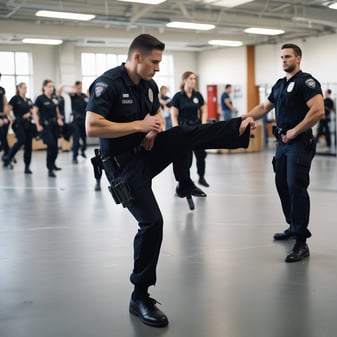How to Get Your Use of Force Certification in Ontario: A Complete Guide
In Ontario, professions like security and law enforcement require Use of Force training to ensure safe and legal force application. This certification is crucial for roles such as security guards, police officers, and private investigators. This blog outlines the steps to obtain your Use of Force certification in Ontario.
HOW
Step 1: Understand the Legal Framework of Use of Force
Before you begin any training, it's important to understand the legal context of using force in Ontario. The Criminal Code of Canada and the Ontario Police Services Act outline when force is justified, and what types of force are considered acceptable.
Key points to consider:
Reasonable and Necessary Force: Force is only justified if it is necessary to protect yourself, others, or property, or to prevent a crime.
Excessive Force: Using more force than necessary could lead to criminal charges or civil liability.
Security Personnel and Use of Force: Security guards, for instance, are limited in their authority compared to law enforcement officers, but they must still follow the same legal principles when using force.
Knowing these basics will lay the foundation for your Use of Force training.
Step 2: Complete Basic Security Guard Training (if applicable)
If you're a security guard in Ontario, you must first complete the basic security guard training and obtain your security guard license. This 40-hour course covers various topics, including:
Basic security procedures.
Emergency response techniques.
Report writing and communication skills.
Once you’ve obtained your security guard license, you can move forward with specialized training, including Use of Force certification.
Step 3: Enroll in a Use of Force Training Program
If you're eligible for Use of Force training, the next step is to find an accredited provider offering this course. Several training organizations in Ontario specialize in this certification. These programs teach you how to apply force safely and legally, while also helping you develop skills for de-escalating potential conflicts.
The training programs typically include:
Legal Considerations: Understanding when force is justified according to the law.
De-escalation Techniques: How to handle tense situations without resorting to physical force.
Defensive Tactics and Physical Techniques: How to physically restrain individuals safely and effectively.
Scenario-Based Training: Real-world simulations and role-playing to help you practice applying the techniques learned in training.
Make sure to select a reputable training provider that is recognized by the Ontario Ministry of the Solicitor General or another relevant authority.
Step 4: Complete the Use of Force Training Course
The Use of Force training course is usually a 1 to 3-day program, depending on the depth of the material. During the course, you will learn:
Legal Aspects: When and how force can be applied legally and the consequences of excessive force.
Conflict Management: Techniques to de-escalate situations and prevent the need for physical force.
Physical Restraints and Defense: Techniques for safely subduing individuals when necessary.
The training will often include hands-on exercises, allowing you to practice the techniques in a controlled environment.
Step 5: Pass the Exam and Receive Certification
After completing the course, you will need to pass a test or demonstrate your competency in the skills taught. This exam may include both theoretical (written) and practical (hands-on) assessments. Once you successfully complete the test, you will receive your Use of Force certification.
This certification is generally valid for 1 to 3 years, depending on the provider. It is important to keep track of the expiration date to ensure you stay up to date with the latest laws and techniques.
Step 6: Keep Your Certification Up-to-Date
In some professions, such as security, Use of Force training may need to be renewed periodically. Some employers may also require employees to take refresher courses or additional training sessions to stay current with any changes in the law or industry best practices.
Renewing your certification typically involves taking a short refresher course and updating your knowledge on the latest safety practices.
Conclusion
Use of Force certification in Ontario is an essential qualification for those working in security, law enforcement, and other roles that may require the use of force to protect others. The certification process involves completing specialized training that covers the legal and practical aspects of using force responsibly and safely.
By following the steps outlined in this blog—from completing basic security training to finding an accredited Use of Force training provider—you’ll be well on your way to becoming certified. This will not only improve your professional skills but also ensure that you are legally compliant and prepared for the demands of your role.
Explore More


Inspiration
Explore tips for fitness, decor, and wellness.
Connect
Discover
© 2024. All rights reserved.
